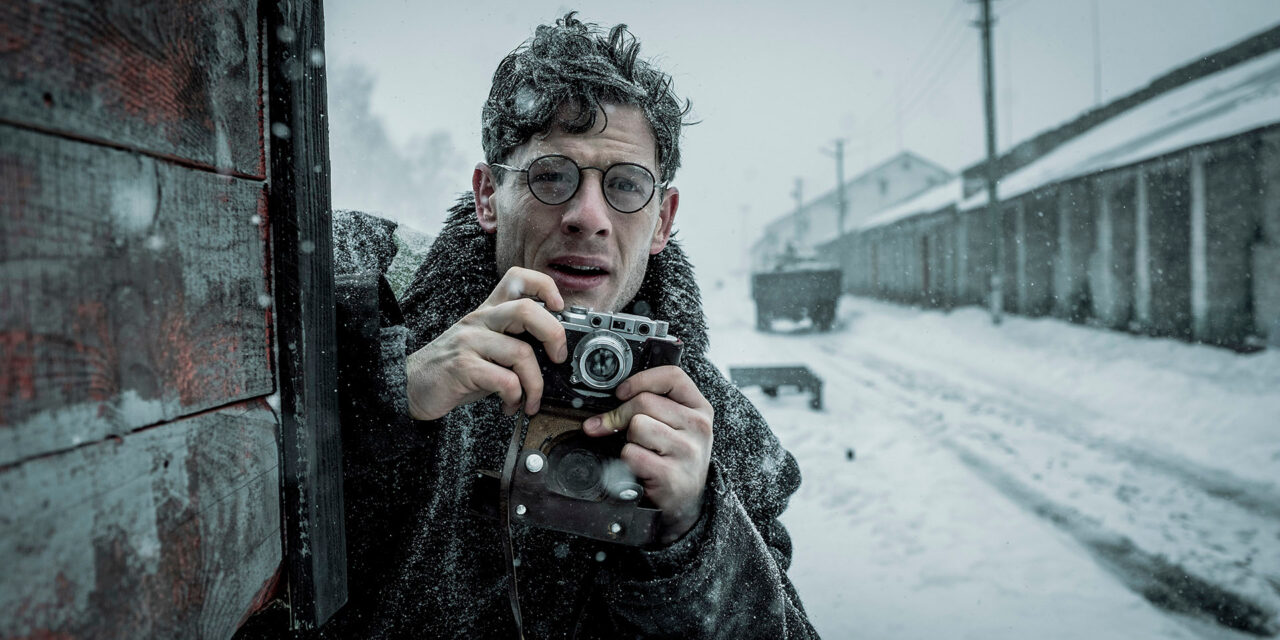If you were to meet a dozen people on the street and were to ask them if they’d ever heard of the Holocaust, they’d probably think you were crazy. Everybody knows of the six million Jews who died as a result of Hitler’s “final solution.” But take the same dozen (or, if you like, twelve dozen) and ask them about the Holodomor, and you’d probably get blank stares, embarrassed half-smiles, or indifferent shrugs.
Odd thing: you’d have gotten the same response from Westerners in the early thirties. Plus ça change, plus c’est la même chose.
Just for the record, the Holodomor was Stalin’s plan to remove all of the wheat—the staple of the Russian peasants’ diet—from Ukraine in 1933 just as winter set in, then to seal the borders and allow nature to, let’s say, take its course on the kulaks (small landowners). The death tally is now believed somewhere around 3.5 million although some estimates are much higher. No matter. If genocide’s your thing, 3.5 million for one winter isn’t shabby.
Gareth Jones had a word or two to say about the Holodomor, but like the barbarous event itself, you’ve probably never heard of him. A Welsh diplomat/journalist, Jones traveled to the Soviet Union in 1933 (he also went there in 1931). A former assistant to ex-Prime Minister David Lloyd-George, his ostensible purpose was to find out how the Soviet state was rolling in cash in the absence of fully developed industry and commerce. With Lloyd-George’s hesitant blessing, he set out for Moscow to get the real story.
Mr. Jones, a film released this past spring and currently available on Amazon Prime, tells its hero’s story. Hoping first to make contact with a journalist friend who, by phone, has told Jones that something big and secret is happening in Ukraine, Jones arrives in the U.S.S.R. to find his friend has rather inconveniently died. But, never fear, the Soviets will provide him with an escort to travel to Ukraine and see for himself the fields of rippling wheat, the “gold” that accounts for the country’s improbable economic miracles. It’s the old story of the Potemkin tour. Like Bernard Shaw, Lincoln Steffens, and a host of other leftist Western dupes, the authorities will show Jones the marvels they assume he’s primed to see, and, after a champagne party or two, he’ll depart to sing the praises of the Workers’ Paradise.
In Mr. Jones, however, the parties occur when the Welshman arrives, courtesy of Walter Duranty, the British-born correspondent for The New York Times, whose white-washings of Stalin’s atrocities, especially in Ukraine, won him a Pulitzer and kudos worldwide. His lavish and decadent party into which Jones steps displays the typical corruption of the late twenties and early thirties: alcohol, drugs, and sex. The only thing missing as far as Jones is concerned is any reliable information about the Ukraine and Soviets’ economic wonders, despite Duranty’s unctuous assurances that legit wheat sales account for the success.
Still, Jones wants to survey the land for himself, and so, accompanied by a rather thuggish chaperone, he journeys to Ukraine. The thug, like many a Russian, likes his vodka, and as he drinks himself into a mild stupor, his charge quits the train and begins his private investigation of the villages and countryside.
What he sees will not be unfamiliar to those who have read about the event, but no matter how much one knows, the cinematic re-creation proves gruesome. The wheat is being taken away, all right, and the Ukrainians are left with little to eat in its place. As the few eyewitnesses who got in and out later reported, dogs and cats were strangely absent from the frigid towns. Not surprisingly in Mr. Jones, corpses occasionally choke roadside gullies. In an unforgettable scene, Jones, growing ravenous himself, comes upon a group of children who strangely have some cooked meat to offer him. Where did they get it? When one of them says, “our brother,” Jones doesn’t quite get it—or doesn’t want to. But when he staggers out the back door of the hovel, he finds the “brother,” a corpse with a few of the more delectable cuts missing.
It goes without saying that such scenes are hard to watch, but in many ways, they pale in comparison to the disgusting response Jones receives when he returns home to reveal the truth. In brief, no one believes him, something Malcolm Muggeridge discovered when he tried to report the same story in The Manchester Guardian months later. Virtually blackballed, Jones sinks into despair but continues ferreting out the truth about the Soviets—that is, until he is murdered by the NKVD in Mongolia in 1935, aged twenty-nine.
Mr. Jones is a film that should have been made years ago, but we can be grateful for it today. James Norton plays the lead exactly right, with a mixture of naïveté, conviction, and muted outrage. No less impressive is Peter Sarsgaard’s Duranty: suave, menacing, and more than happy to accept the Stalinist dictum about the necessity to break a few eggs. The cinematography is Technicolor, but—and who would wish it otherwise—you’ll swear it’s black and white, so subdued are the tones. All in all, the film manages to convey the central truth about the forgotten event it chronicles: what happened in Ukraine in 1933 wasn’t famine in the usual sense; it was policy. And the West didn’t care to know.
Carl C. Curtis holds a Ph.D. in Literature from the Institute of Philosophic Studies, University of Dallas, and writes contentedly from his home in central Virginia.















Thank you!